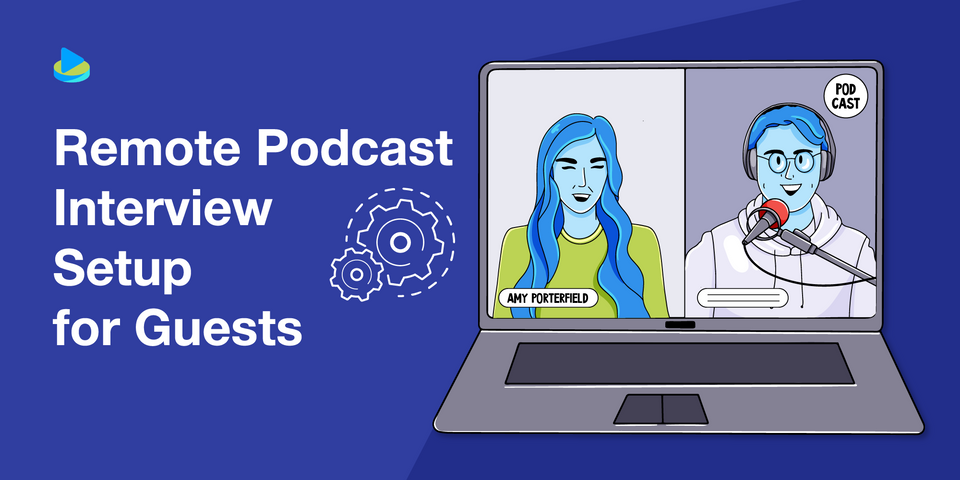You've booked your first (or next) remote podcast interview. Fantastic! Next up is the part most guests underestimate—your setup.
Since you’re reading this, you’re already ahead of the game. Most guests assume a remote podcast interview is just another Zoom call, and that mistake can quietly undermine their credibility, no matter how strong their content is.
So, what does a great setup actually look like?
There’s one guest I kept returning to in my research. A name you probably know.
Amy Porterfield.
Key Takeaways
- Amy Porterfield sets the gold standard for visual and audio quality in guest interviews.
- Your setup needs to be good, but not perfect.
- You don’t need to empty your wallet on expensive gear to look and sound professional.
Table of Contents
What's the gold-standard for remote setup?
Contrary to what you might think, it's not just micro-podcasts that record remotely. I checked on Rephonic and found that some big-name shows record remote interviews at least some of the time. The Tim Ferriss Show, The Foundr Podcast and Masters of Scale all record a mixture of in-studio and remote interviews, while The Official SaaStr Podcast has remote video interviews interspersed with solo episodes.
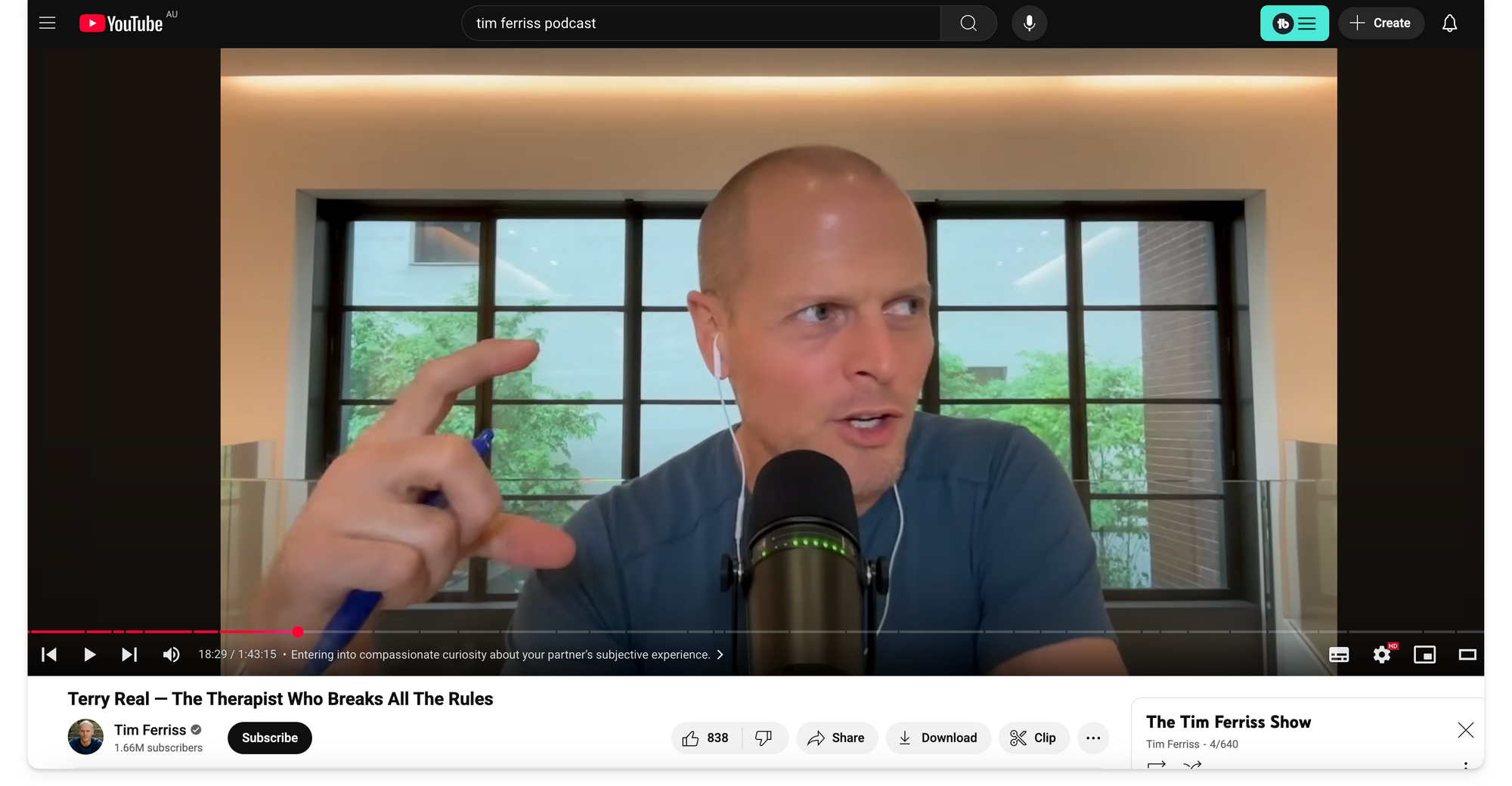
I watched dozens of guest interviews while hunting for a standout setup to include in this article, and few are as consistently polished as Amy's.
As you can see from the screenshots in this article, Amy uses the same setup every time. Visually, she's nailed the background, lighting and personal style. And you only have to listen for a minute to realize she's nailed the audio quality, too.
It’s pretty common for a podcast guest’s audio to sound noticeably worse than the host’s, but not in this case. Watch just 30 seconds of her appearance on Social Media Examiner at 02:51, and you’ll hear how evenly matched they are.
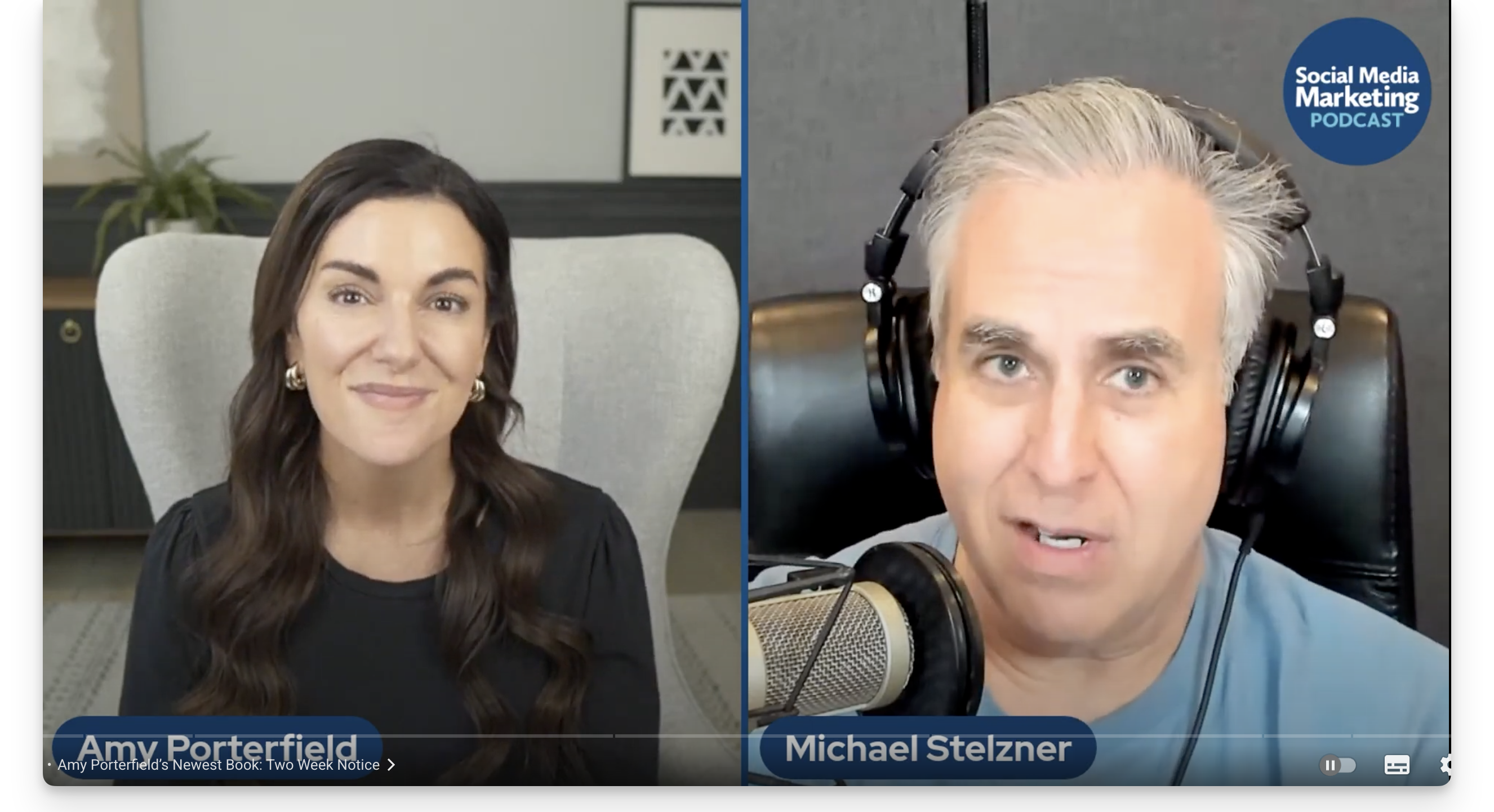
You might not be able to replicate that audio quality without investing heavily in gear, but you can absolutely upgrade from the tinny audio of most video conferencing software.
Even if you're only recording one interview, remember to set the bar high (but it doesn't need to be perfect.) If you're getting booked on multiple shows, it makes even more sense to figure out your setup right at the start so you don't have to decide on a location and equipment every time.
Have the equipment you need, but nothing fancy; and have a space in your house that just always works. It's a game changer.
Let's break down how Amy created that polished, professional interview environment.
1. Choose the right audio space
So, how can you prepare your environment for a smooth podcast recording?
Not all rooms are created equal when it comes to sound. Avoid remote recording in echoey environments like kitchens or glass-walled offices. These hard surfaces bounce sound around and can make your audio harsh and reverberant.
Avoid this:
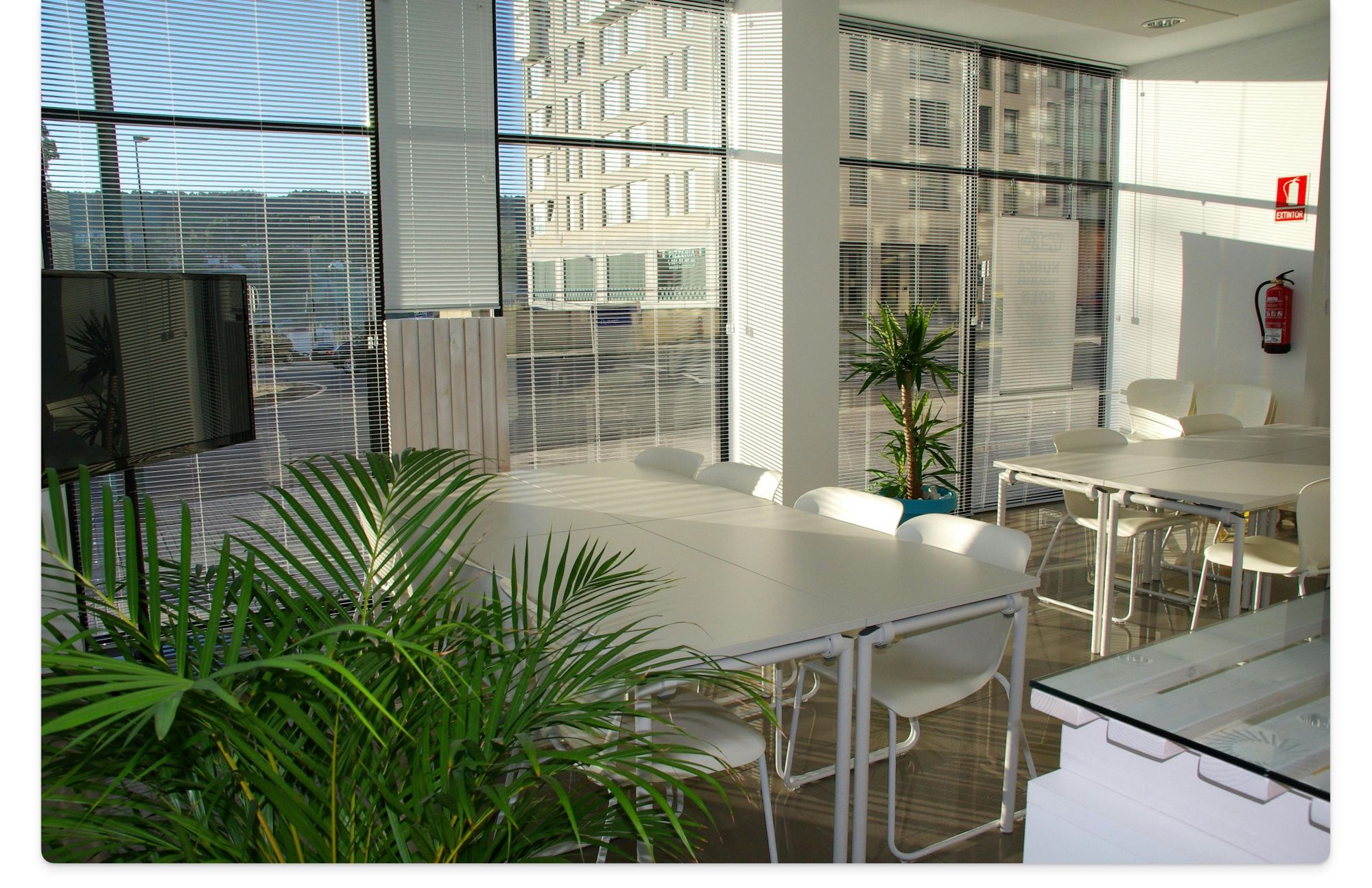
Instead, aim for a space with:
- Rugs on the floor
- Curtains over windows
- Cushions and soft furnishings to absorb sound
A quiet, cozy room will always beat a stylish space with bad acoustics when you're aiming for the best audio quality.
You want to create a quiet recording space with no background noise, so ask other people to keep out during your interview.
2. Use headphones
In most remote situations, the host and guest record on separate tracks (i.e., separate audio files) which makes editing and balancing the audio much easier. Headphones help you avoid audio feedback and keep the host's voice out of your recording.
- For audio-only podcasts, closed-back wired headphones are ideal—they isolate sound and prevent leakage.
- For video podcasts, bulky headphones might not suit your on-screen look, so AirPods or low-profile earbuds are fine.
Just make sure you go into your settings and select the right output source so the audio plays through your headphones—not your laptop speakers.
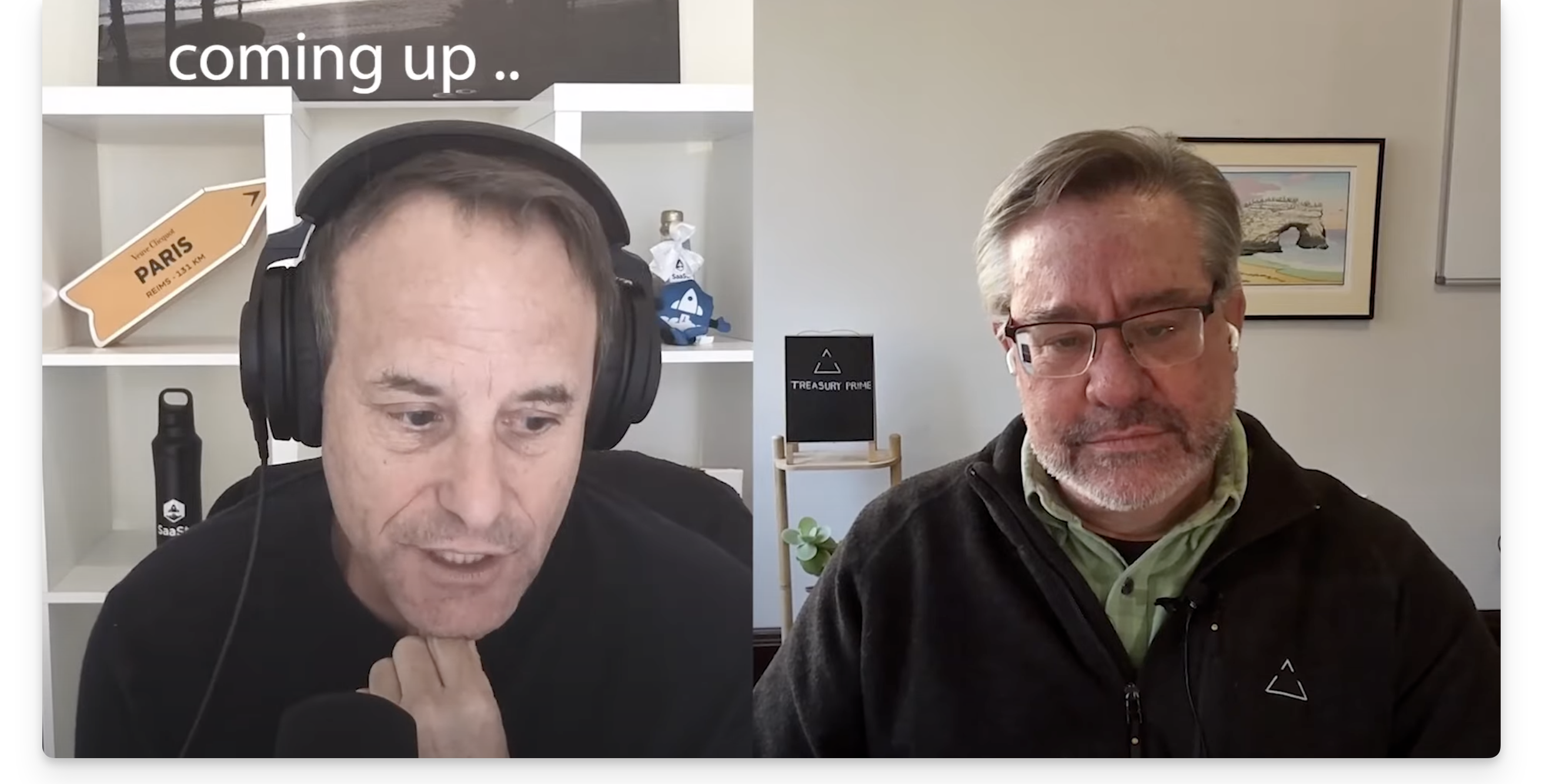
Amy doesn't seem to wear headphones or AirPods and I'm guessing that's because her personal brand is that clean, polished look we see in all three of her images.
However, given her professional sound quality, I'm sure that hidden out of shot she has one or more high-quality directional microphones and enough soft surfaces to prevent echoing. With all that going on, any minor audio bleed will be easily mopped up in post-production editing.
That said, if you're relatively new to podcast guesting or don't have a tech team, headphones or AirPods are your safest bet.
3. Get a USB Microphone
If you’re serious about sounding professional, a USB microphone is one of the best investments you can make. Even entry-level models can dramatically improve your sound quality.
Just like with your headphones, remember to select the mic as your input in your computer settings.
So, that's the sound quality sorted. Let's fine-tune your video setup, too.
4. Nail the framing
In video recordings, how you’re framed on screen matters—a lot!
One common mistake? Setting your laptop flat on a desk or table. This usually results in an awkward up-the-nose angle and puts you low in the frame.
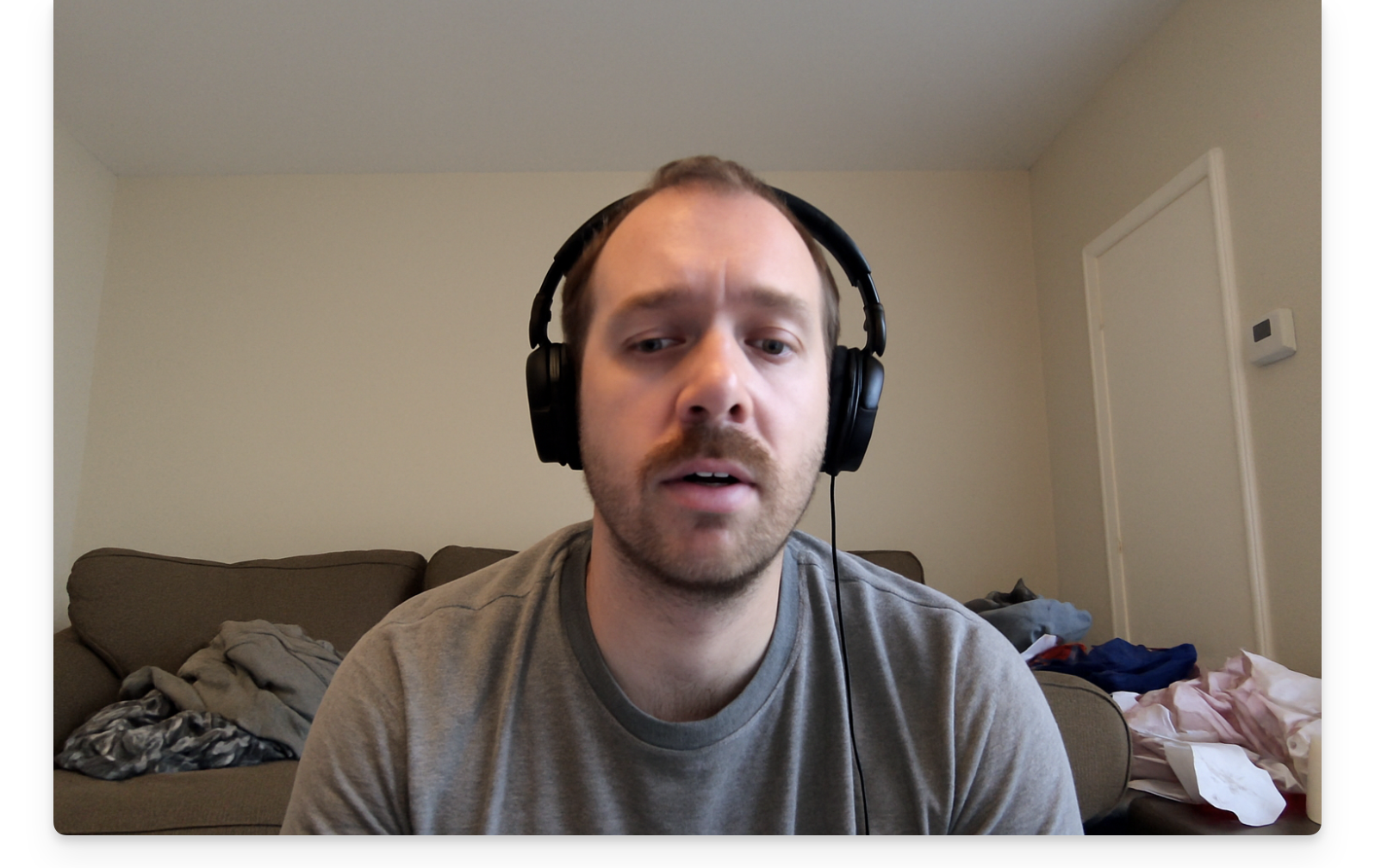
Do this instead:
- Raise your laptop or webcam to eye level using a stack of books or a stand.
- Sit so your eyes are around one-third from the top of the frame.
- Make sure the background is clean and uncluttered.
For inspiration, check out Amy Porterfield’s appearance on Foundr. Her camera angle is spot-on, she’s well-centered, and her background is tidy, neutral and softly lit.
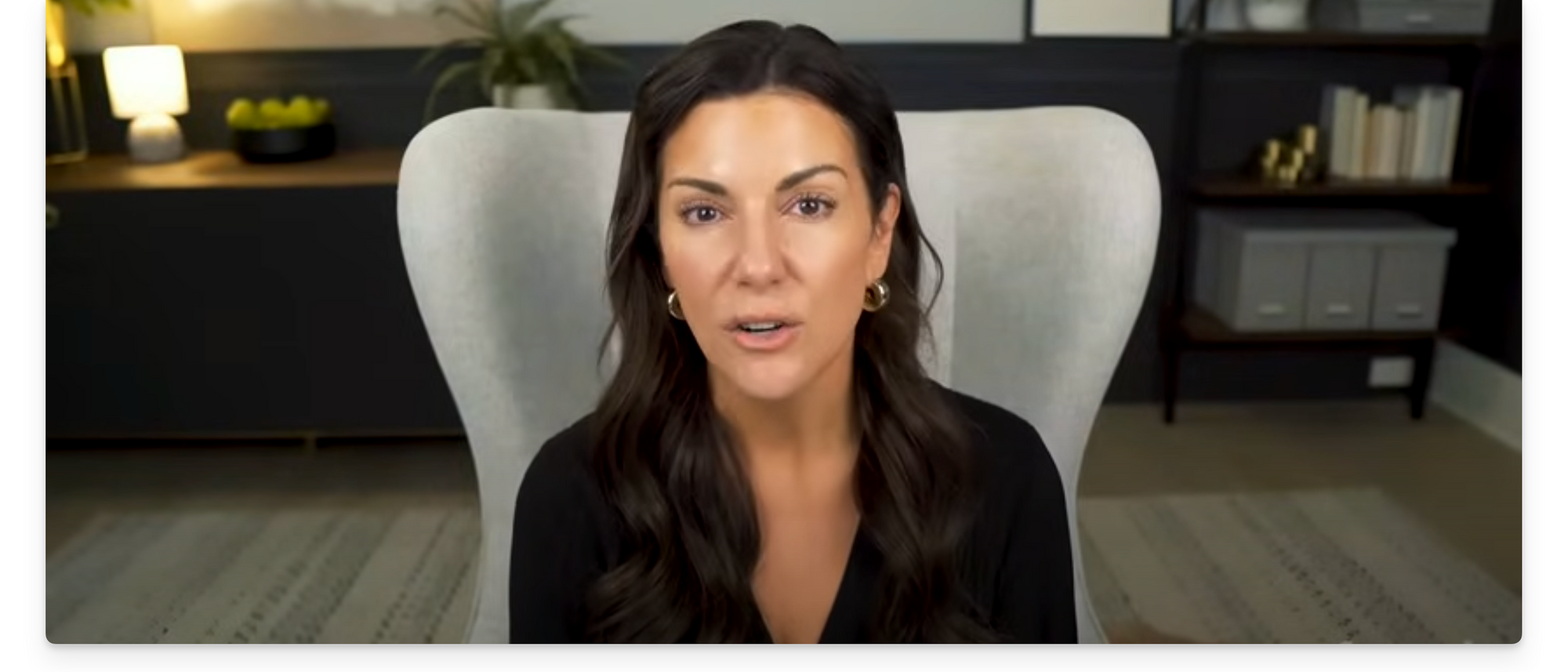
5. Get the lighting right
Backlighting is a common issue. If you're sitting with a bright window behind you, your face will likely be in shadow. The fix is simple—just face the window instead so the light shines onto your face. If natural light isn’t an option or it’s too harsh, a basic ring light positioned just above your webcam can give you an evenly lit, professional look.
Again, Amy's a good example. There’s soft lighting on her face and less light behind her, so her setting fades into the background.
6. Check your camera quality
Crisp video makes you look more polished and keeps your audience engaged.
Here’s what you need to know:
Many built-in laptop webcams max out at 720p (1280 x 720 pixels) which can be a little fuzzy compared to Full HD (1920 x 1080 pixels).
If your video recordings look grainy, even with great lighting and super software, consider plugging in an external webcam that supports 1080p for a crisp, clean look.
Always check before the video call to make sure your microphone and camera are using the right inputs because your laptop might default to the built-in options. So, check the settings to confirm the right audio and video inputs and do a quick test recording or call to make sure everything's working as it should.
7. Use the best internet connection
I've heard some agonizing podcast recordings (before editing)—stop-start conversations punctuated with "Can you still hear me?" and "You've cut out again." One host even told me their guest's internet connection blipped so often, they had to re-record the interview in a different location.
Accidents happen, for sure. But do your best to ensure a reliable internet connection for every podcast interview.
Final Thoughts
Nailing your remote podcast recording set up now gets you polished and ready to go whenever an interview opportunity comes along. If you're serious about podcast guesting, invest in a microphone, light, and possibly a webcam. Then, practice setting up in the same room till you develop an easy routine.
Here's an image-based summary of what you need to remember:
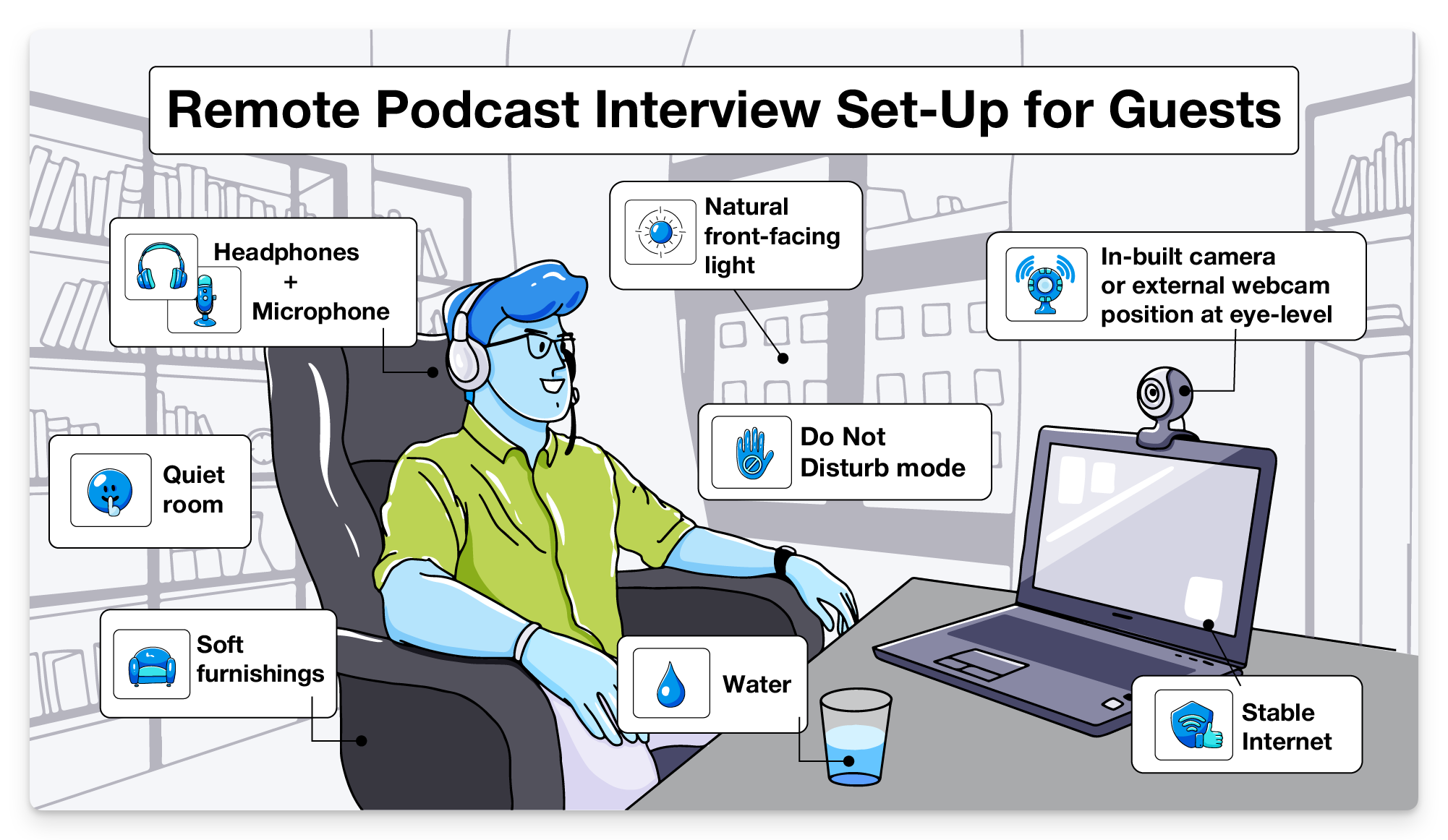
Got your setup sorted? Now find the highest-impact podcasts.
Rephonic is the most complete podcast database for PR teams, marketers, and founders looking to book high-impact guest appearances and ad spots. Access listener numbers, contact info, audience demographics and more for over three million podcasts.
Try Rephonic out with our 7-day free trial.
Article credits

Written by Lyn McNamee, podcast-PR writer with four years of experience transforming podcast insights into practical, results-focused playbooks.

Edited by Becca Butcher, marketing specialist who frequently analyzes Rephonic’s data across 3 million podcasts.
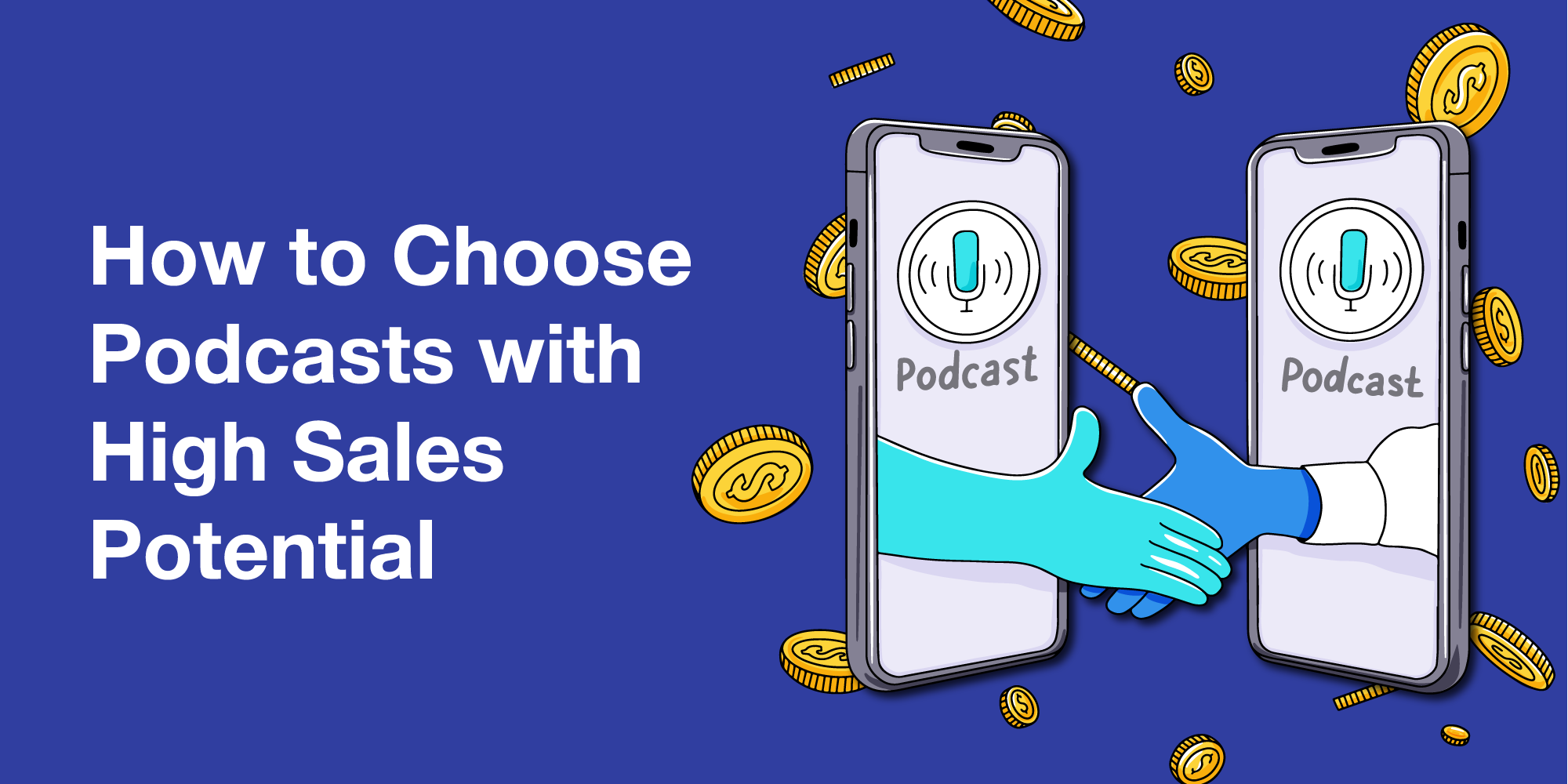
How to Choose Podcasts with High Sales Potential for Podcast Guesting
Podcast guesting builds brand awareness—but not every show will bring in customers. This article shows you how to find podcasts with real sales potential, so your time behind the mic pays off.

How to Write a Podcast Outreach Email With AI (And What to Avoid)
Can AI help you write an effective podcast outreach email? Yes, but it won't give you a winning email at your first attempt. Be smart and use AI for research first. Here's how you do it.

